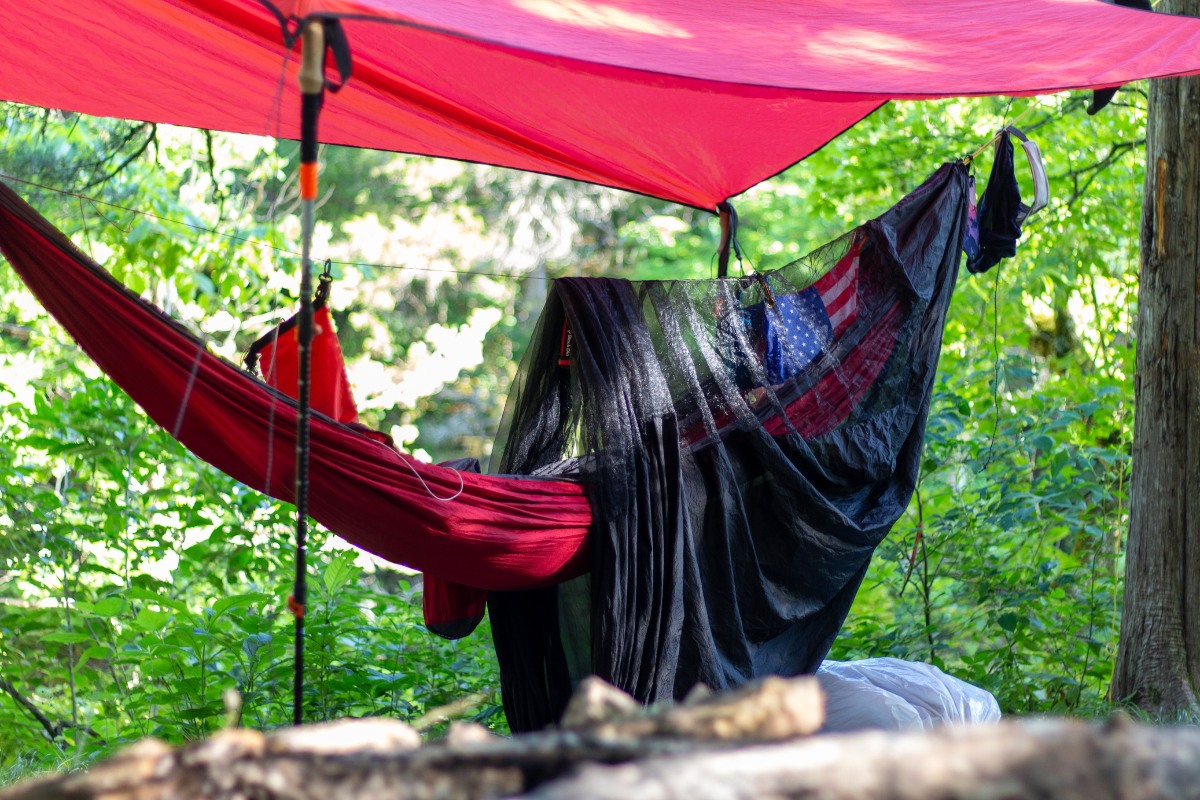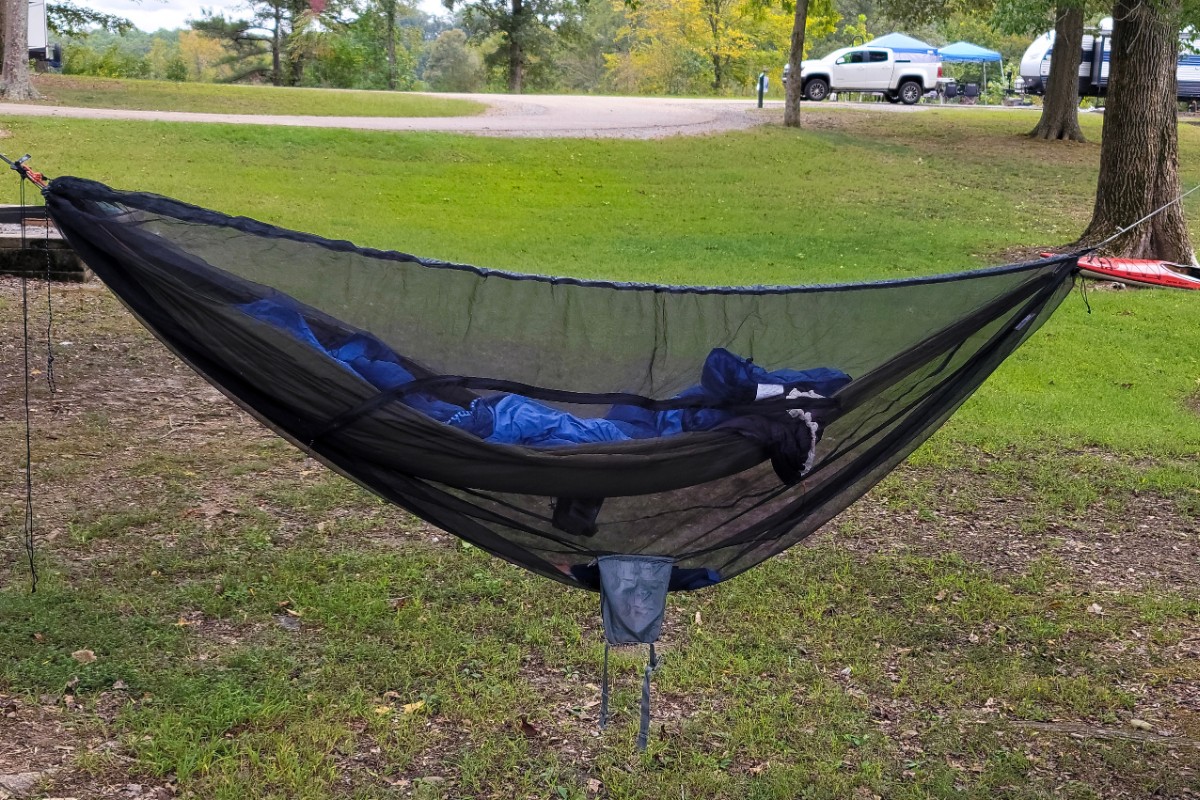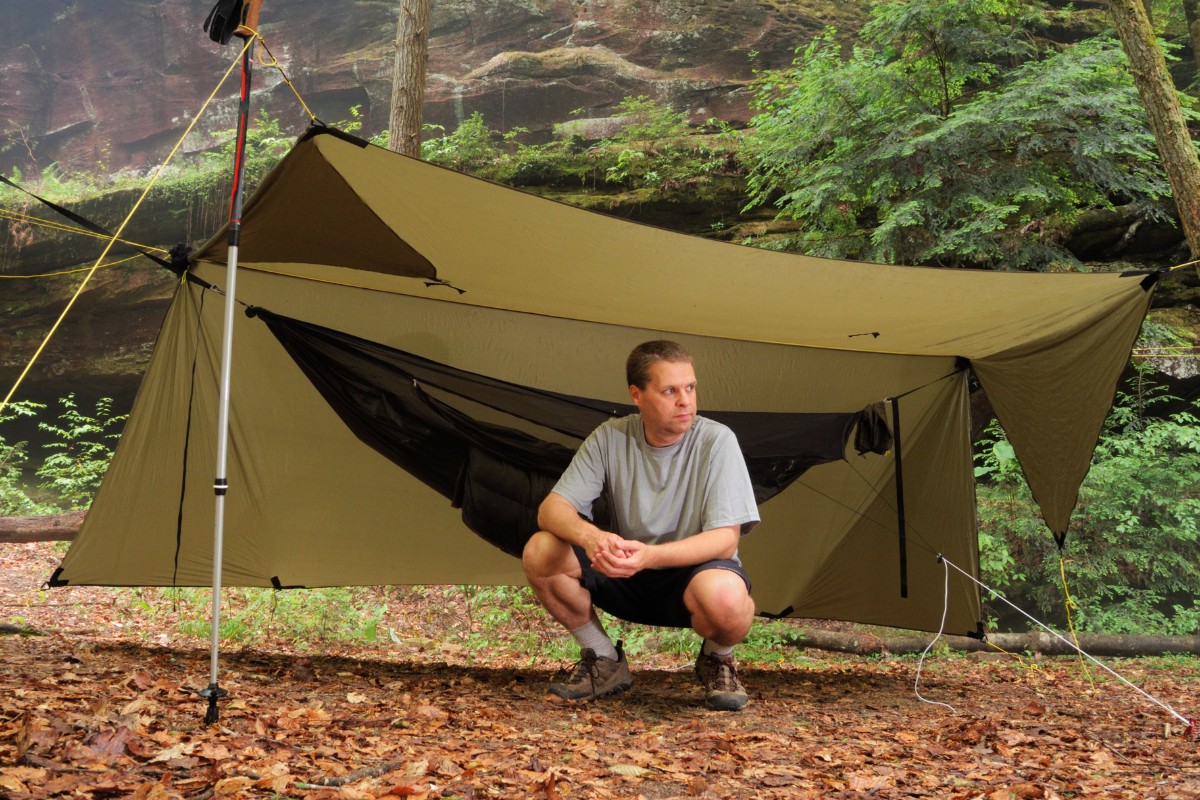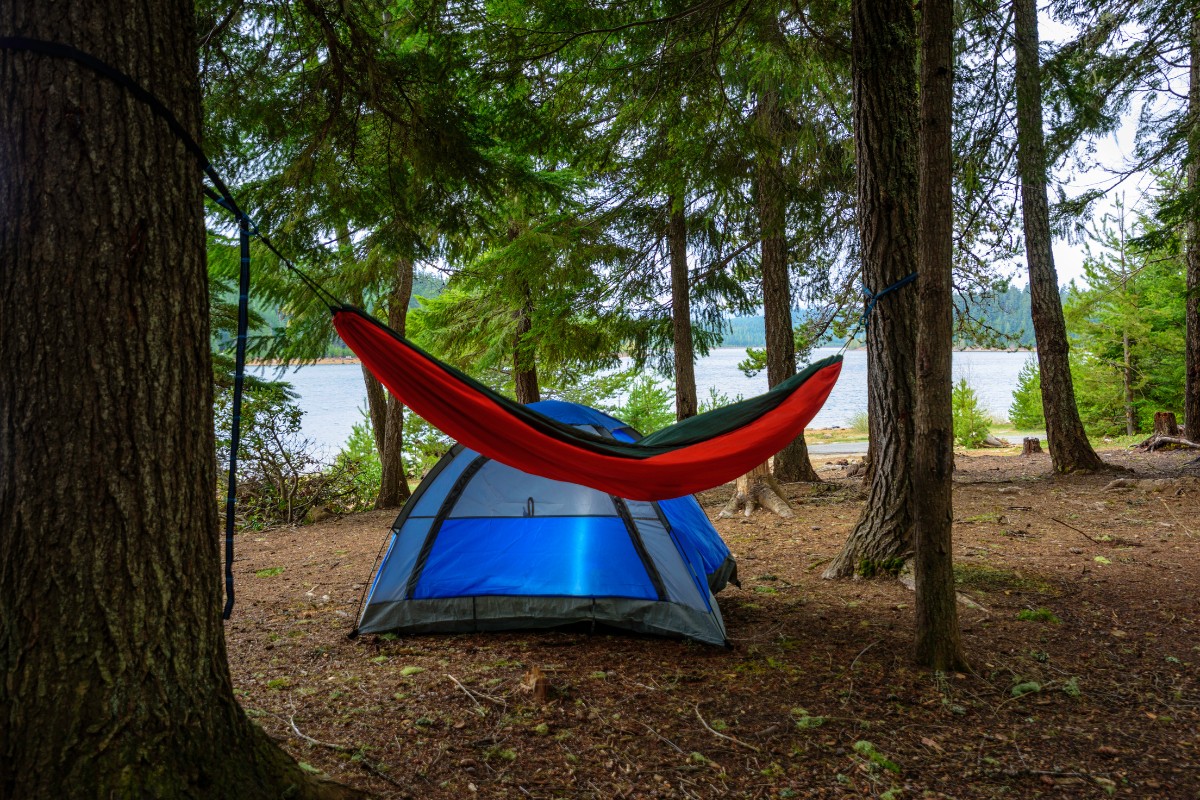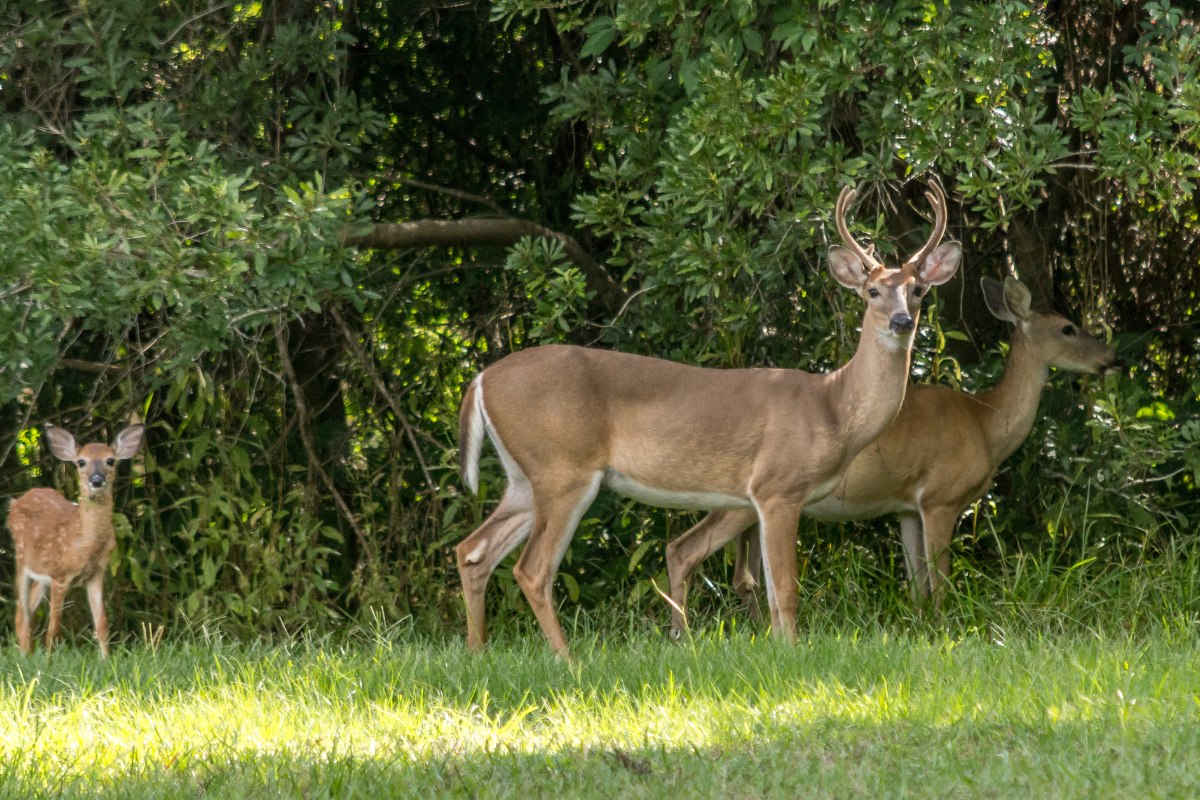Camping hammocks or backpacking hammocks are among the most popular outdoor resting and sleeping gear. Compared with backyard recreational hammocks, they have a relatively flatter surface, are not too saggy, are lightweight, and often feature a built-in or detachable no-see-um bug net.
Many companies manufacture this outdoor sleeping essential in different appearances, functions, and styles. Among all the camping hammocks on the market, the two most common designs are gathered end and bridge.
In the rest of the article, a thorough comparison between these two designs will be provided, along with a discussion of some other special designs.
What Is a Gathered End Hammock
The gathered end (also known as collected-end) hammock is a piece of rectangular fabric bunched up at the head and foot ends to form a curved shape. The fabric is often made of synthetic nylon, which is lightweight and durable, ideal for complicated outdoor weather conditions. This is the simplest and most prevalent design of all styles of camping hammocks.
When you see a gathered end hammock advertisement, you may often see “Asymmetrical/Symmetrical” or “Single/Double” in its description. So, what are they referring to?
Symmetrical vs. Asymmetrical Hammocks
Specifically, when the manufacturer says “asym” or “sym,” it doesn’t mean the hammock is cut asymmetrically or symmetrically. It only refers to whether the mosquito bug net is asymmetrical or symmetrical in a parallelogram or rectangular shape.
They differ in sleeping experience. When you lie diagonally in the symmetrical hammock, the “ridge” in the center line of the hammock might bump up to put pressure against your calf, creating pain called ridge calf. But in an asymmetrical hammock, the ridge line is parallel with your diagonal position, relieving the ridge calf. So, the asymmetrical design is more comfortable.
However, asymmetrical hammocks do have some downsides. Occupants are limited to lying in one position, unlike in a symmetrical one where you can toss and turn. Besides, asymmetrical design hammocks are often more expensive and usually offered by some vendor manufacturers, such as Warbonnet and Hennessy.
Single vs. Double Hammocks
A single or double hammock doesn’t refer to occupancy but the hammock’s width. A single hammock often has a width in the 4-5 feet range and a 250 lbs weight limit. A double hammock often has a width in the 5-6 feet range and a 500 lbs weight limit.
They are both designed for one user, although the double hammock is theoretically spacious enough for two people to lie in. However, it is definitely not comfortable to sleep together overnight. For recommendation, a person taller than 6′ should choose a double hammock for more room to relax and chill.
Pros of Gathered End Hammocks
- Simple, lightweight, and only takes a little space in your backpack, easy to go.
- Fairly inexpensive and user-friendly compared with bridge hammocks.
- Easy to set up, preferred for unknown terrain and tree distance distribution conditions, more versatile with any kind of related accessories.
- Have more room for user tossing and turning, more “room to roam,” and is better for someone who sleeps a lot in the fetal position.
Cons of Gathered End Hammocks
- Not comfortable for side sleepers, only for back sleepers.
- Possible to cause calf ridge and heel pressure pain for the user.
What Is a Bridge Hammock
A bridge hammock is designed like a hanging bridge, using two aluminum spreader bars at each end to make the body open, shaped like a half-barrel. The surface is relatively flatter, allowing the occupant to have a true head-to-foot flat lay in multiple sleeping positions. This design is a more modern entrant into the hammock family and offers a totally different experience from the gathered end design.
Bridge vs. Spreader Bar Hammocks
Some might confuse bridge and spreader bar hammocks. Although both have two spreader bars, the bridge hammock is completely different from spreader bar hammocks.
A spreader bar hammock refers to the traditional hammock, featuring wooden bars at both ends to flatten the fabric tight and open. It has a high center of gravity and is prone to flip. As a recreational hammock, it is often seen at tropical beaches, exotic hotels, and swimming pools. The typical types are rope hammocks, Nicaraguan hammocks, quilted hammocks, and poolside hammocks.
A bridge hammock specifically refers to a bridge design camping hammock, different from a lounging hammock’s design.
Pros of Bridge Hammocks
- Flat surface for side sleepers and back sleepers, not limited to one position as in a gathered end hammock.
- No calf ridge and heel pressure, friendly for first-time hammockers to get comfortable.
- Enables a better surrounding view when lying in it.
Cons of Bridge Hammocks
- Heavier and takes more space in the pack due to spreader bars (using trekking poles as a replacement can eliminate this con).
- More steps and time to set it up, requiring a longer distance between trees.
- Tubular shape offers a narrower sleeping area, may cause shoulder squeeze for a larger person.
- A little more expensive and hard to cover with a tarp due to its longer length.
Which Design Should You Choose
From the above detailed explanation, you should have a clear understanding of these two designs. For a decision on which design to choose, in conclusion:
If you really like a flat lay or side sleep only, don’t mind a bit more weight in your pack, and know the situation about your destination terrain and trees, choose a bridge hammock.
If you can sleep on your back overnight, pursue an ultra-lightweight camping journey, or go to an unknown place for hammocking, choose a gathered end hammock.
Still can’t make a decision? Visit your local store to try both designs, or purchase both designs online, keep both, or re-sell the one you dislike to others.
Other Designs of Camping Hammocks
Tree Tent Camping Hammock
This is a more novel design for camping hammocks. If you need a big hammock for family camping or a fixed spot for long-term outdoor habitation, the tree tent is absolutely phenomenal.
A tree tent hammock uses a multi-point anchoring system to create a flat fabric base for 2-3 or even more people to sleep comfortably together. It seems to be the heaviest, most complicated, and durable hammock. Although much more expensive than other designs, it’s really worth the investment for families and small groups seeking a unique and memorable camping experience. A brand like Tentsile is famous for this design.
Flat Surface “Spread Bar” Camping Hammock
Do not confuse with the words “spreader bar” here; it forms a normally flat surface, not like a bridge hammock’s half-barrel shape. The most famous brand is Lawson Blue Ridge.
